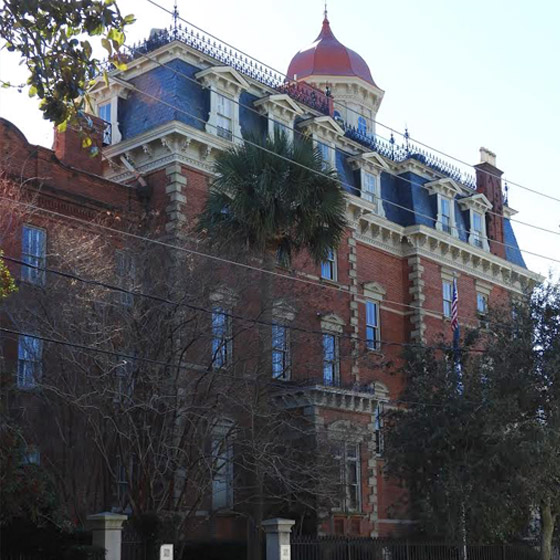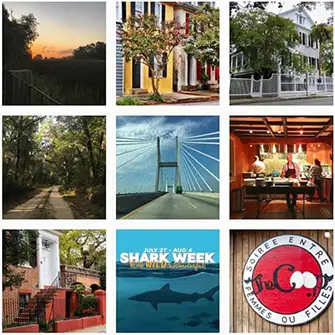
149 Wentworth Street
The Rodgers Mansion is right down the street and around the corner from the Mikell House that we visited last week. Built at a time when money was scarce in the south and most Charlestonians had embraced the "too poor to paint and too proud to whitewash" reality of life here, Francis Silas Rodgers gave Charleston one of its grandest homes.
Frank Rodgers was born in Charleston in 1842 and went into the cotton factoring business with his father. A factor was simply a broker or middleman; most cotton planters used cotton factors located in major ports like Charleston to sell their exports. Even after the Civil War, sea island cotton was a viable export in the South until the early part of the twentieth century when the boll weevil came along.
Rodgers was able to weather most of the economic problems facing the South after the Civil War. Though Charleston and the surrounding area was economically devastated, some Lowcountry land owners, such as the Draytons, fortunately were able to find phosphate on their property. Rodgers invested in phosphate and owned a large interest in the Atlantic Phosphate Company. He also invested in other business enterprises and built his wealth over a period of years.
Rodgers began the planning and subsequent construction of his mansion in the early 1880s. The construction was interrupted by Charleston's great earthquake of 1886, but the house was completed in 1887. The final result was well worth the wait. Four stories high, marble mantles, Tiffany stained glass, a mansard roof with a cupola and iron rail around the roof, 149 Wentworth embodies the grandeur of the Second Empire style of architecture.
Rodgers was active in local politics, serving on the City Council for two terms. For a city that endured five great fires between 1740 and 1861, one of Rodgers' most important contributions was the organization of Charleston's first paid professional fire department. Rodgers was a member of Charleston's Board of Fire Masters for over 30 years and served as its Chairman for most of that time. Until he became infirm several years before his death in 1911, Rodgers supposedly attended every fire in Charleston. (He also spent many hours using the cupola at 149 Wentworth as a watchtower for fires.)
In 1920, Rodgers' family sold the house to the Scottish Rite Cathedral Association, and in the 1940s, Atlantic Coast Life Insurance Company purchased the building. The current owner purchased 149 Wentworth in 1997 and converted it into a posh hotel. A few years later, he remodeled one of the dependency buildings into a AAA Four Diamond restaurant known as "Circa 1886." I doubt Frank Rodgers would have expected anything less for 149 Wentworth.
Next week, we'll visit another true Charleston mansion built 10 years after 149 Wentworth.



